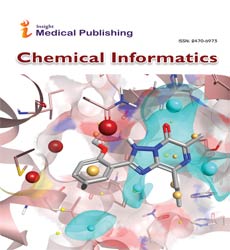Abstract
Chaos Based Quantitative Risk Assessment of Cardiac Dysfunction
Congestive Heart Failure is a growing menace spreading its jaws worldwide. As for all diseases, early detection of the disease is the key to thwart the rampage caused by the disease. With the existent diagnostic devices and methodologies, cost of diagnosis is high and some are painful due to their invasive nature. This has led us to apply non-linear methods for analysis of ECG signals and formulate biomarkers.
Analysis of cardiac signals using fractal analysis has gained sufficient momentum over the past few years. In this article the cardiac dynamics of ECG data are explored with chaos based non-linear time series analysis techniques -- Hurst exponent and Power of scale freeness in Visibility Graph PSVG. The ECG data of normal subjects and CHF subjects are taken from Physionet [1] database and analyzed with these techniques to calculate values of Hurst Exponent and PSVG.
The Hurst exponent analysis reflects the chaotic behavior of normal and CHF patients’ heart and the PSVG parameter can significantly differentiate the CHF patients from normal people.
The parameters obtained by the non-linear analysis of ECG signals can be used as biomarkers. The biomarkers can be used by clinical laboratories as well as by smart phone users. Clinical software or mobile apps implementing the proposed method can be used for alarm generation during onset of cardiac abnormalities of the CHF patients.
Author(s):
Rajib Sarkar, Anirban Bhaduri, Susmita Bhaduri and Dipak Ghosh
Abstract | Full-Text | PDF
Share this

Google scholar citation report
Citations : 173
Chemical Informatics received 173 citations as per google scholar report
Abstracted/Indexed in
- Google Scholar
- China National Knowledge Infrastructure (CNKI)
- Directory of Research Journal Indexing (DRJI)
- WorldCat
- Geneva Foundation for Medical Education and Research
- Secret Search Engine Labs
- CAS (Chemical Abstracting Services)
Open Access Journals
- Aquaculture & Veterinary Science
- Chemistry & Chemical Sciences
- Clinical Sciences
- Engineering
- General Science
- Genetics & Molecular Biology
- Health Care & Nursing
- Immunology & Microbiology
- Materials Science
- Mathematics & Physics
- Medical Sciences
- Neurology & Psychiatry
- Oncology & Cancer Science
- Pharmaceutical Sciences

